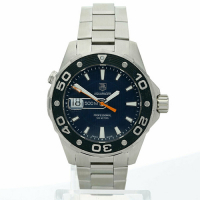What You Should Know About Insuring Your Jewelry
It’s not pleasant to think about, but imagine for a moment you come home from an enjoyable evening out and all your expensive jewelry has been stolen. Your lifetime collection of necklaces, earrings, bracelets and other fine jewelry is all gone. Then you realize your jewelry isn’t insured.
To help ensure this never happens to you, here’s what you should ask and know about insuring your jewelry, courtesy of callagold.com.

Does your existing insurance cover your jewelry?
The first question regarding jewelry insurance is to find out what your current homeowner’s or renter’s insurance policy covers. Most policies will offer $1,000 to $15,000 of unscheduled personal property. Find out what your policy offers: What kind of loss is covered? Loss from theft? During travel or bad weather? Are there circumstances that aren’t covered? Make sure it’s all spelled out in writing before signing on the dotted line.
Consider adding “scheduled” jewelry insurance to your policy
Whether or not you have personal property insurance in place, ask the insurance company about adding a “scheduled” rider to the policy specifically for your jewelry. Scheduled jewelry insurance can be attached to your existing policy or it can be separate, and generally ranges from $1.00 to $2.00 per $100.00 worth of jewelry per year, so insuring $20,000 worth of jewelry could cost $200.00 to $400.00 per year.
Here are more questions to consider and/or ask a personal property coverage insurance company:
- How will you be compensated if your jewelry is lost? Will the insurance company write you a check for the full value of the jewelry piece at the time you purchased it? Or at the time it was appraised years later? Do they pay its value today, or will they pay the “replacement cost?”
- If you lose an insured custom-made piece, will they pay to have your jeweler replicate it or will they want you to go with their preferred jeweler who will provide a similar piece?
- Does the policy cover repair or partial loss? What if you just lose the center diamond on your engagement ring but not the whole ring? What if your bracelet slipped off your wrist in the driveway and you ran it over with the car?
- What do you need to make a claim? A police report? A picture? Get details.
- Are there things you can do to lower the premium, such as store your jewelry in a safe or a bank safe deposit box? Install a burglar alarm in your house? What if you move into a higher crime neighborhood?
What you’ll likely need to insure your jewelry
The original receipt, if possible. I know what you’re thinking: great-grandma’s necklace didn’t get passed down with one. Nor did the engagement ring your first husband gave you. Don’t worry! If you can’t come up with one, a good appraisal is worth more, anyway.
Certificates. Larger gemstones—especially diamonds—are often graded and certified by one or more industry accepted organizations. The two most recognized are the GIA and EGL.
An appraisal. Most insurance companies require appraisals, especially for more expensive items. Often, they won’t accept the one from the store where you bought the piece. You’ll need to have a separate certified appraiser work up an appraisal/valuation for you. Ask what they require before getting your jewelry appraised/valued.
Pictures. Usually, these are included in the appraisal. Nonetheless, photograph all your jewelry for your own records.
Free advice. Make sure everything is spelled out in writing. If it isn’t written, it isn’t true! Your old agent, Bob, may have “told” you you’d be compensated “in full” for your wedding ring if it was ever “lost,” but if you don’t have it in writing, you’ll have little recourse.
What you can do to protect your jewelry
On her website, writer Calla Gold recommends the following things you can do to help ensure the safety of your jewelry:
Regularly check all your jewelry for wear and tear including the prongs holding your gemstones and the clasps on all your chains and bracelets. Also make sure rings fit snuggly and aren’t in danger of slipping off. Have a professional jeweler check your more valuable and frequently worn pieces.
Keep good jewelry locked up. For really valuable jewelry, a bank vault is safest, but home safes are also effective, as long as they can’t easily be carried away. A safe that’s bolted to the floor or in the wall is best, but don’t make it too difficult to get to your pieces, or you probably won’t wear them.
Take off your jewelry before doing any activity that may put your pieces in danger of breaking or getting lost, such as going to the pool or beach, weeding and planting, working out at the gym, and other activities that don’t require nice jewelry.
Leave your jewelry at home when traveling to questionable areas in the U.S. and abroad. It’s better to know your valuable pieces are safely locked away at home than risk losing them on the road.
Keep a file of all your jewelry, including pictures, receipts, certificates, and appraisals. In case of loss or theft, this will be proof for the police and/or insurance company. You may also want to keep a copy of this information in a safe deposit box.
The content of this article is provided for informational purposes only. It is not intended nor should it be viewed as legal advice. All information is intended for your general knowledge only and is not a substitute for professional insurance advice.
